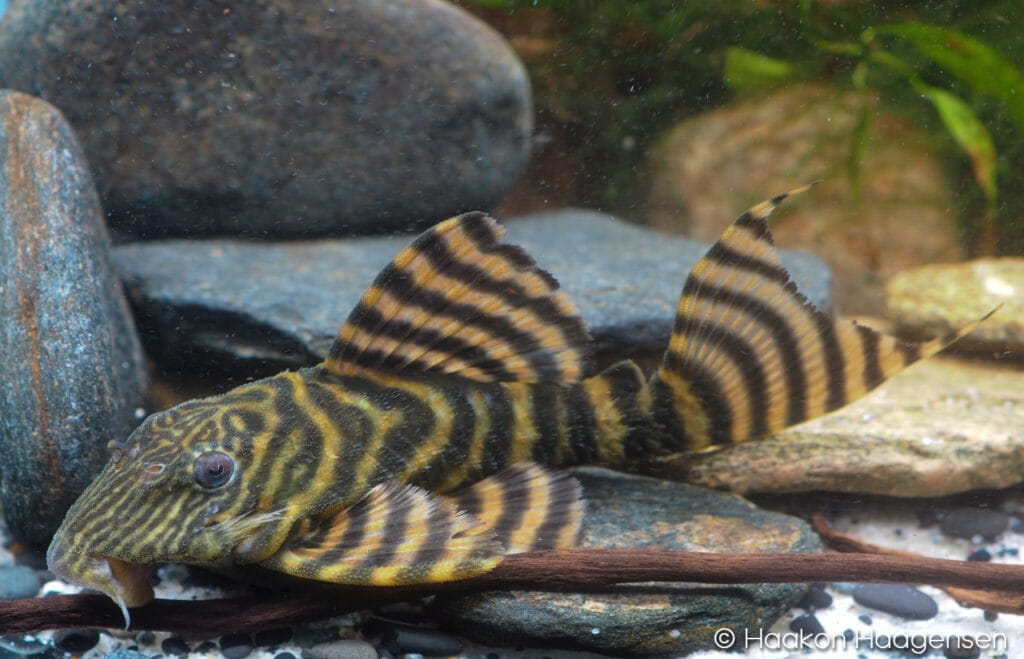
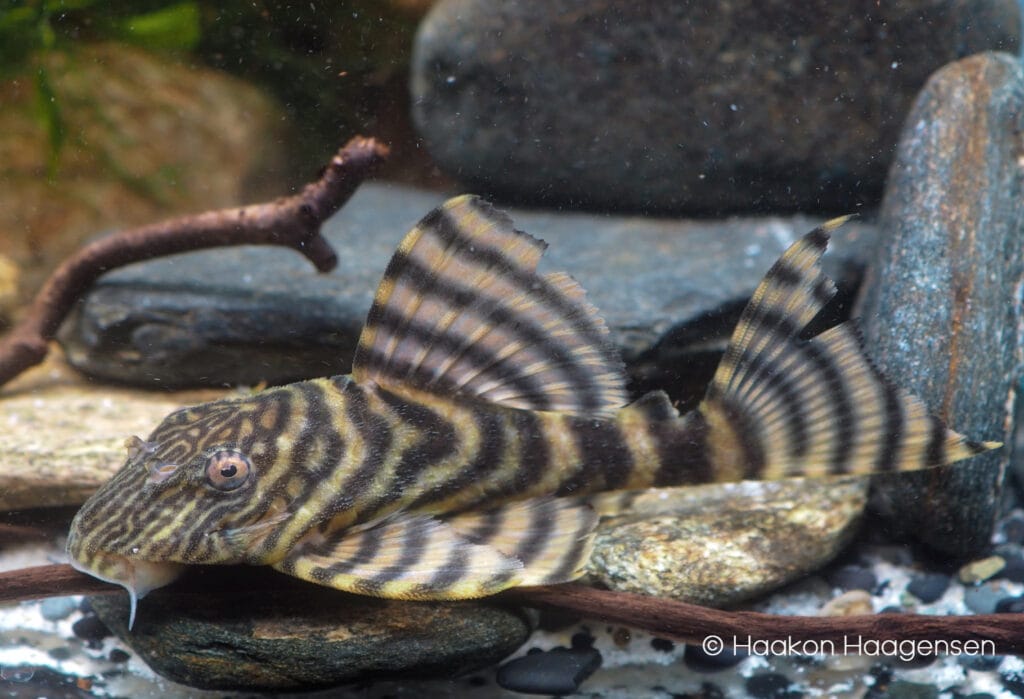
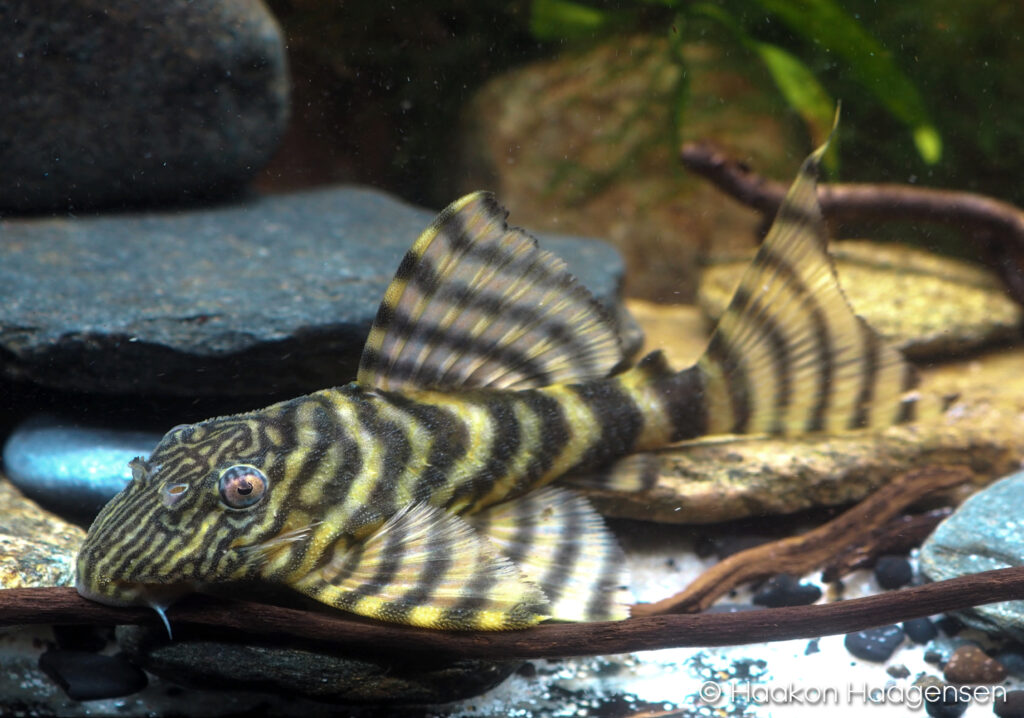
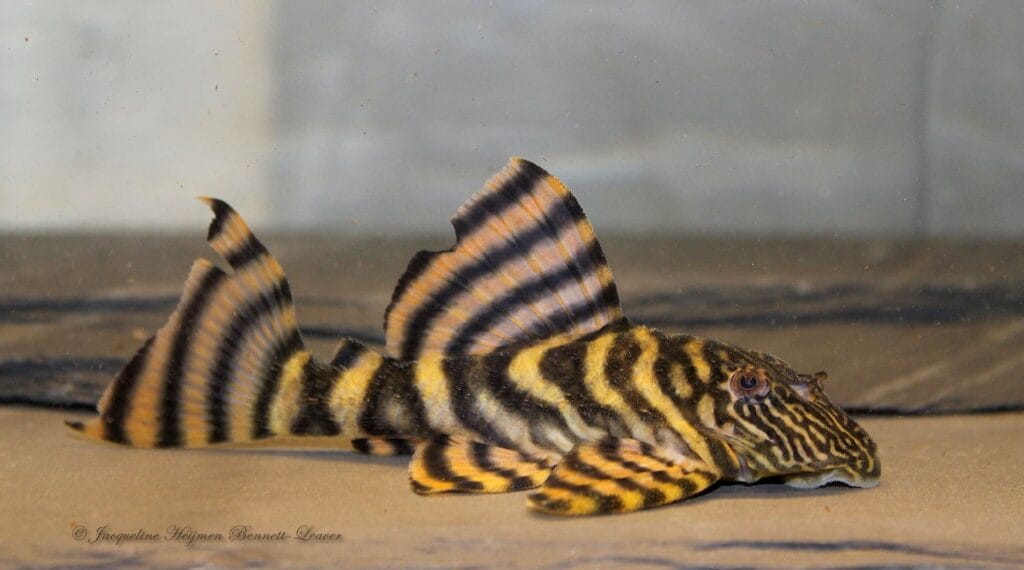
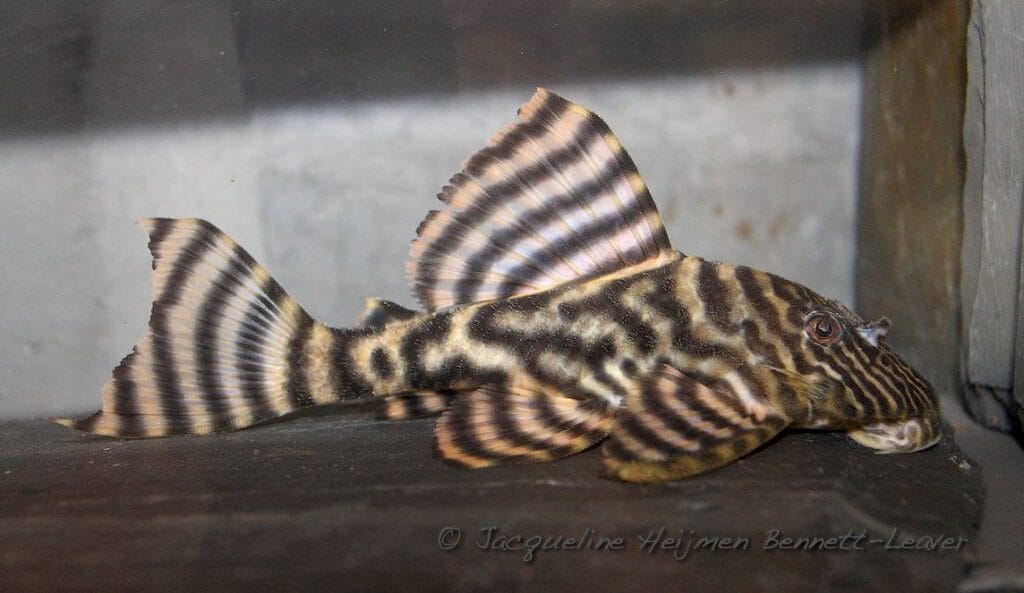
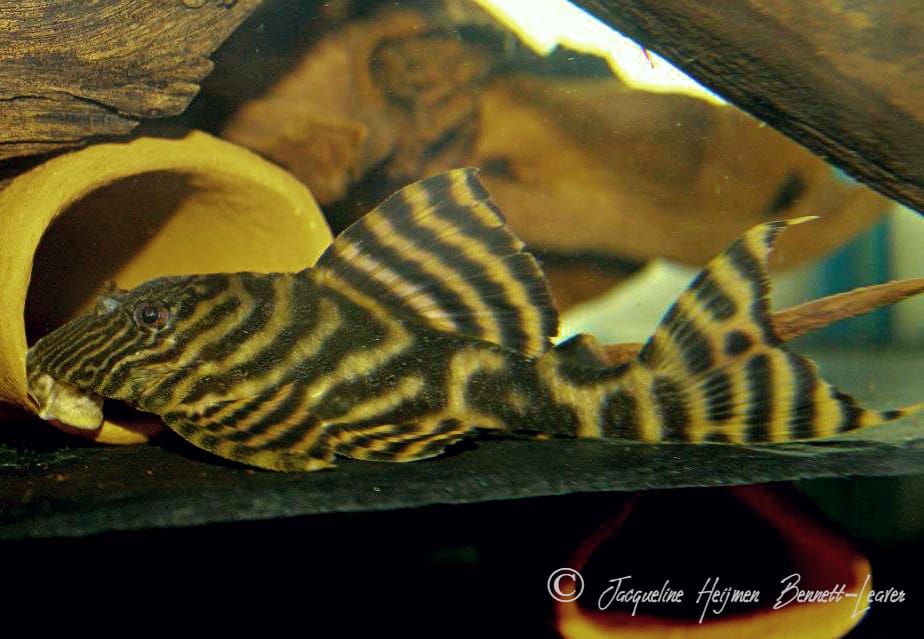
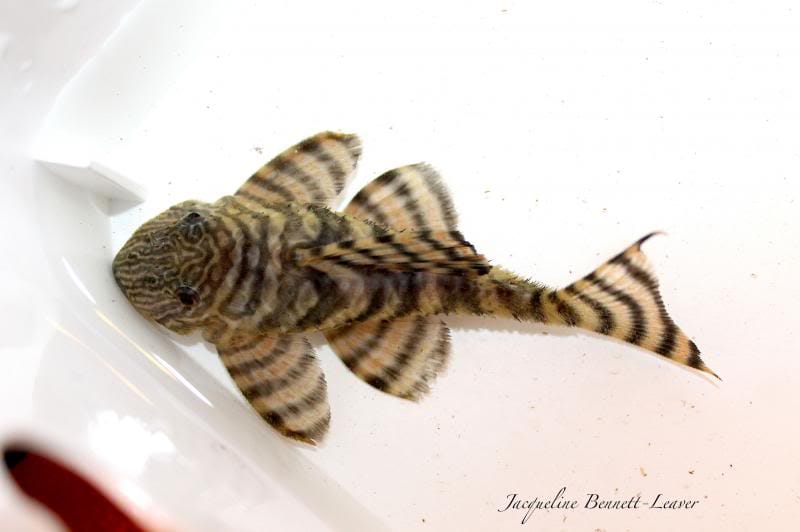
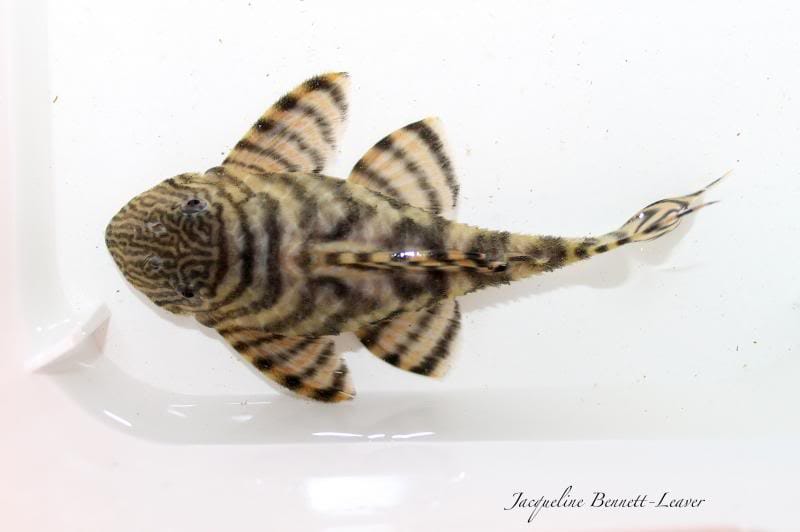
Way up in the Rio Anapu, where the trans-amazonian highway from Altamira runs through the small town of Anapu on the way to Tocantins, the nice Tiger Pleco L374 was found in 2003. Rio Anapu runs further north until it finally enters the Tocantins system, and in the lower Anapu there is another form of Tiger Pleco labeled L403. They might all be variations of the same species, including L2 and L74 from the Tocantins system, but this is yet to be confirmed. L374 is considered to be the nicest form of them all, as it keeps the high contrast between light and dark colour even as adults. The other mentioned forms gradually loose this contrast as they grow and age. As a result, L374 is perhaps the most sought-after form, but unfortunately also the least common in the hobby. They are not collected for export from Brazil, so we are lucky they have been established in the hobby through captive breeding. Interestingly, two different types are known, where the “Gottwald-strain” is slightly more orange than the “Transfish-strain”, which is more beige. Both forms were first imported in 2003.
Facts:
Name: Panaqolus sp.
Trade names: L374, Anapu Tiger Pleco
Origin: Rio Anapu, Brazil
Maximum size: 13 cm / 5”
Panaqolus species are great aquarium fish. They need shelter in the form of wood and rocks, and if they feel safe, they will venture out in search of food even during daytime. They prefer a vegetarian diet, and of course wood is essential for their digestion. Some crustaceans and insect larvae can be added, but a diet consisting of too much protein and too little vegetarian food can cause trouble for their digestion. They are peaceful Plecos, but males can be quarrelsome over territories and food. Panaqolus species are slightly more challenging to breed than many other popular Plecos, but it’s usually all a matter of time and patience. When they do, they breed in typical Loricariidae manner with the male guarding the brood in his cave. Usually, male Panaqolus develop quite impressive odontodal growth on their flanks and on their fins. Due to the very high risk of crossbreeds, different types / L-Numbers of Tiger plecos should not be housed together.
More info:
